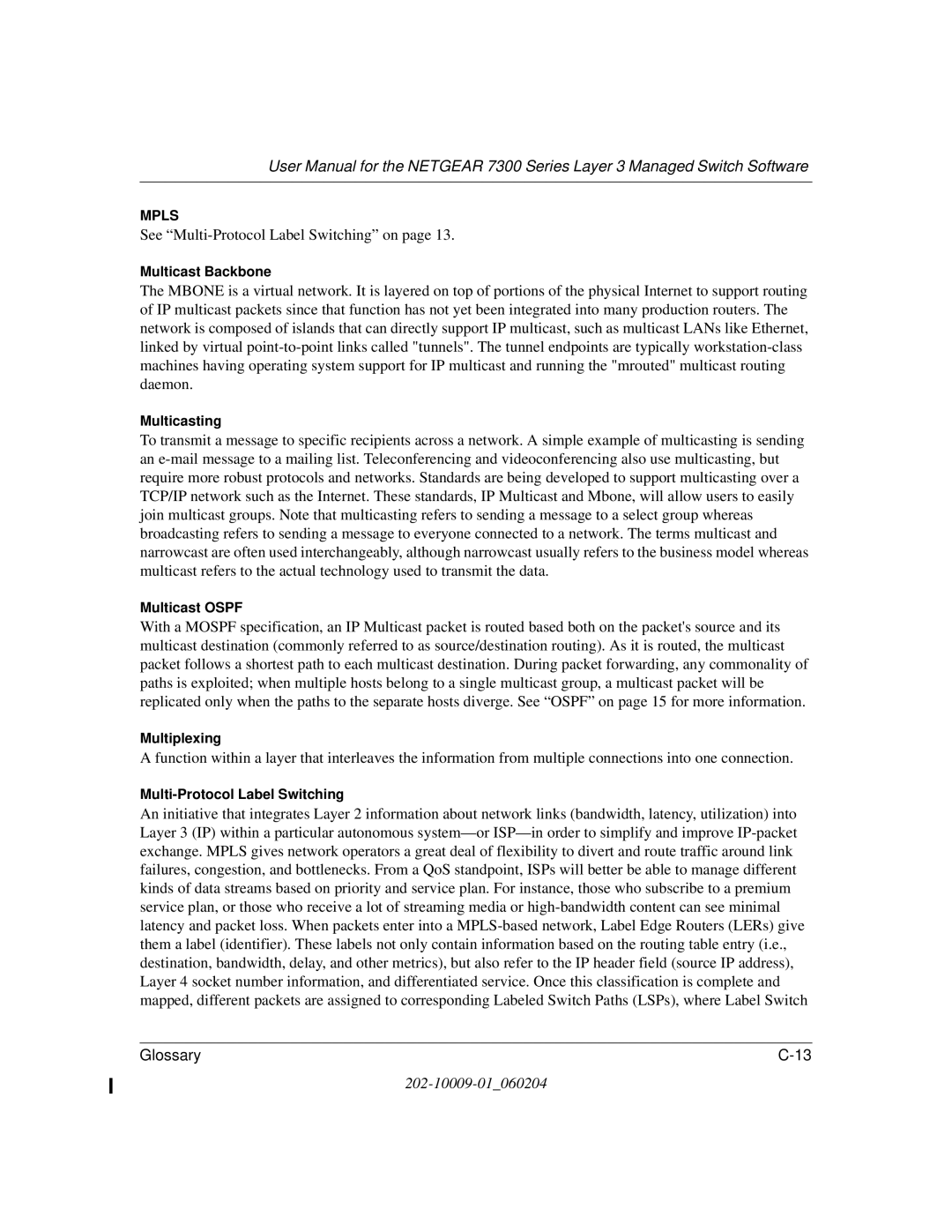
User Manual for the NETGEAR 7300 Series Layer 3 Managed Switch Software
MPLS
See “Multi-Protocol Label Switching” on page 13.
Multicast Backbone
The MBONE is a virtual network. It is layered on top of portions of the physical Internet to support routing of IP multicast packets since that function has not yet been integrated into many production routers. The network is composed of islands that can directly support IP multicast, such as multicast LANs like Ethernet, linked by virtual
Multicasting
To transmit a message to specific recipients across a network. A simple example of multicasting is sending an
Multicast OSPF
With a MOSPF specification, an IP Multicast packet is routed based both on the packet's source and its multicast destination (commonly referred to as source/destination routing). As it is routed, the multicast packet follows a shortest path to each multicast destination. During packet forwarding, any commonality of paths is exploited; when multiple hosts belong to a single multicast group, a multicast packet will be replicated only when the paths to the separate hosts diverge. See “OSPF” on page 15 for more information.
Multiplexing
A function within a layer that interleaves the information from multiple connections into one connection.
An initiative that integrates Layer 2 information about network links (bandwidth, latency, utilization) into Layer 3 (IP) within a particular autonomous
Glossary |
